At the entrance to Saltgrass Printmakers’ Salt Lake City studio, a sinuous form winds across the wall. The dozens of two-foot-square woodcuts, each carved by a different artist and fitted edge to edge, form the Year of the Snake Exquisite Corpse, a sprawling, collaborative print project conceived by Saltgrass c0-founder Stefanie Dykes.
“It’s like the old surrealist game,” Dykes says, referring to cadavre exquis, where each artist adds to a hidden drawing, discovering new forms at the seams. “Every panel connects to the next. Some are playful, some are heartbreaking. You can see the conversations happening between them.”
The snake will travel from one venue to another (including a major showing at the Salt Lake City’s Gallery at Library Square in fall 2026), reconfigured each time it’s installed . It’s collaborative, unpredictable and a little chaotic: exactly the kind of project that has kept Dykes coming back to Saltgrass for more than two decades.
Earlier this year, Dykes wasn’t sure she had the energy for another big idea. After spending months living with and caring for her aging father, he passed, and then she faced several more months settling his affairs. “He built radio-controlled model airplanes, from scratch,” she says. “There was this huge workshop that had to be placed in the right hands—tools, wood, all of it. It took months.”
This all left her drained. “I’ve really begun to question how much I’m investing in other people,” she admits. “I spend my time keeping the shop running so others can work, and I don’t have a body of work that’s my own right now.”
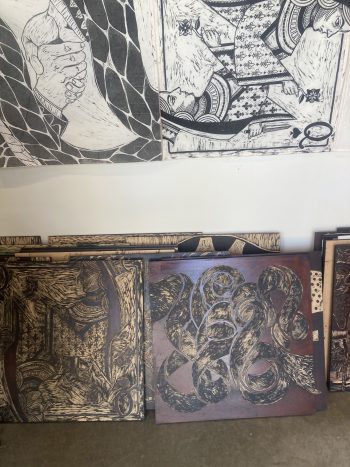 But when she floated the idea for The Year of the Snake, artists from all over Utah answered the call. Some hadn’t carved in years; others were new to printmaking entirely. They came to Saltgrass through the summer to proof their blocks and pull prints on muslin. “The whole thing became a conversation,” Dykes says. “That’s what Saltgrass does—it builds community. And when it happens organically, it’s brilliant.”
But when she floated the idea for The Year of the Snake, artists from all over Utah answered the call. Some hadn’t carved in years; others were new to printmaking entirely. They came to Saltgrass through the summer to proof their blocks and pull prints on muslin. “The whole thing became a conversation,” Dykes says. “That’s what Saltgrass does—it builds community. And when it happens organically, it’s brilliant.”
Saltgrass Printmakers was born from the impulse to connect. In the early 2000s, Dykes and fellow artist Sandy Brunvand had just finished their masters degrees at the University of Utah when they realized how abruptly access to printmaking facilities ends after graduation. So, helped by Brunvand’s husband Erik (who became a founding member), they rented a small bungalow behind a Subway in Sugar House and filled it with presses, rollers and brayers. It was cramped and improvised, but alive with energy. “We often saw people take off into something they never dreamed of before,” Dykes recalled in an early interview. “That excitement—that moment when someone realizes what they can make—that’s the best part.”
Over the next decade, the studio became a hub for printmakers, offering classes in etching, relief, collagraph, and monotype, as well as community print exchanges and small exhibitions. It was Utah’s first nonprofit printmaking cooperative, and for many local artists, a lifeline.
Their first home was eventually claimed by development. In 2016, Saltgrass was forced out to make way for a new housing complex. After a difficult six-month hiatus, they found a new space along 700 West, the former Bogue iron foundry being transformed into a new arts campus. It offered tall ceilings, exposed brick, and open floor plans. “It had the look we wanted,” Dykes said then. “It’s airy, industrial, and built for work.”
The new space shifted Saltgrass’s identity. There was less room for formal exhibitions, but new opportunities for outreach—workshops with schools, library programs, and partnerships on the city’s west side. The studio’s membership remained loyal, and its sense of purpose—access, education, community—endured.
More than two decades since its founding, Saltgrass continues small but steady. The organization continues to receive modest city, county, and state grants — “for now,” Dykes says with a grin—and membership is higher than ever. With growth comes new pressure: more people using the presses, more materials to manage, more demands on her time.
These days, Dykes knows she needs to be more selective about what she takes on. She’s designing programs that emphasize depth and play: a Creative Aging series that unfolds over six to eight weeks, and a new drop-in format she calls Parallel Play—short, craft-based afternoons that encourage simple experimentation. “It’s about quality over quantity of attention,” she says. “Saltgrass is this tiny little moment in the city that lets people be creative and playful. I love that we can hold that kind of space.”
Now in her sixties, Dykes is candid about being in transition. She has begun talking with her board about succession—not because she’s ready to leave, but because she wants to reclaim some balance. “From here on out, nobody knows how your health will hold. I’d like time to just sit and draw.”
Still, she can’t quite imagine stepping away. Every time she tries, something pulls her back — a community project, a student’s request, a new idea that demands company. “If I ever did walk away,” she says, “I would know how to rebuild it somewhere else. But I don’t really want to check out for good. I can take a few months off, sure. But then I’d come back.”
She’d be drawn back by things like the exquisite corpse project, which is taking shape along Saltgrass’ walls. She looks at the rows of woodcuts, light and dark panels coiling together like a visual dialogue, and imagines how the piece will change with each installation, expanding or tightening depending on the space. “That’s the point,” she says. “They all connect. You can see the year these people experienced—the playful moments, the heartbreak, all of it. But they still come together.”
It’s hard not to see the metaphor. Saltgrass itself is an exquisite corpse—continuously reshaped by the artists who pass through, sustained by collaboration and conversation. Every time Dykes thinks she’s done, another idea—another print, another gathering—brings her back.
To sign up for a class, become a member or learn about more community projects, visit saltgrassprintmakers.org.
Categories: Artist Profiles | Featured | Organization Spotlight | Visual Arts

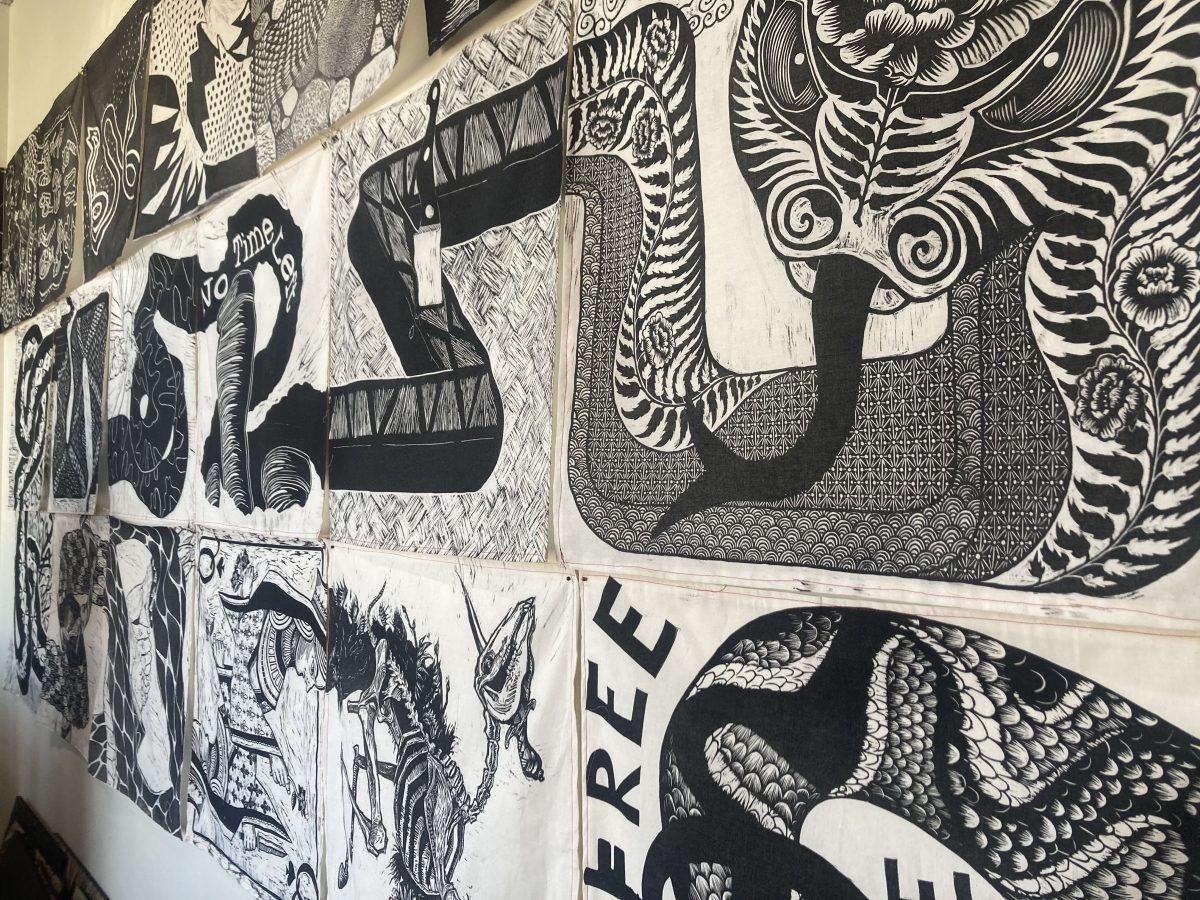
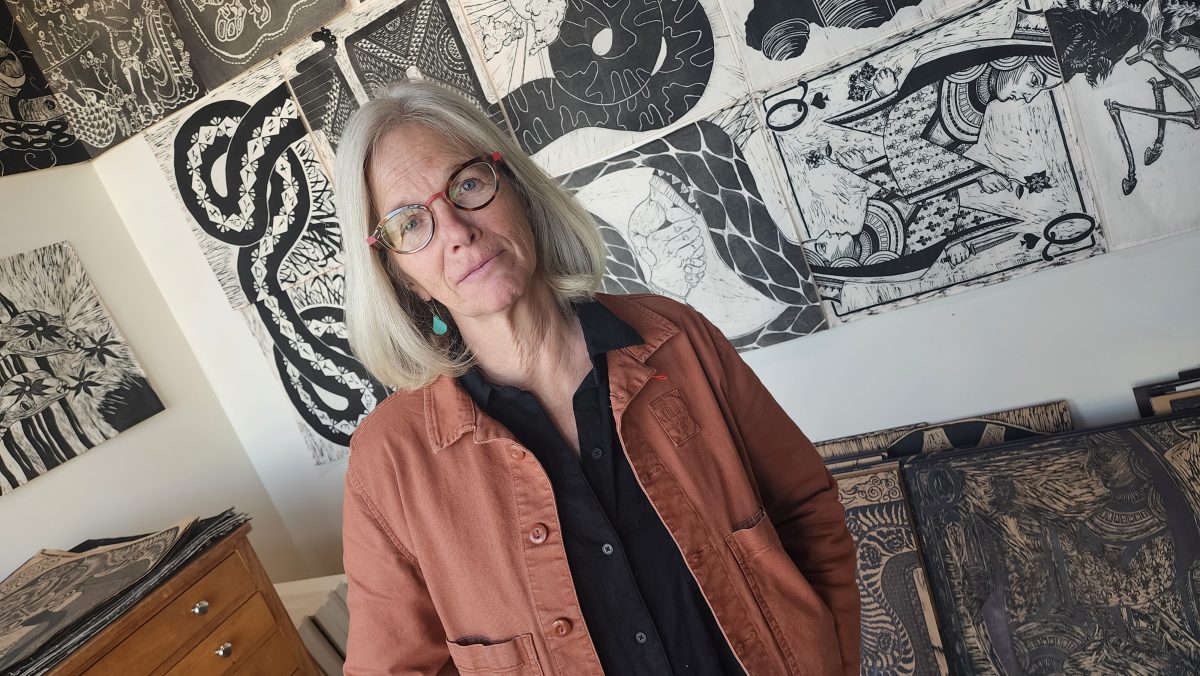
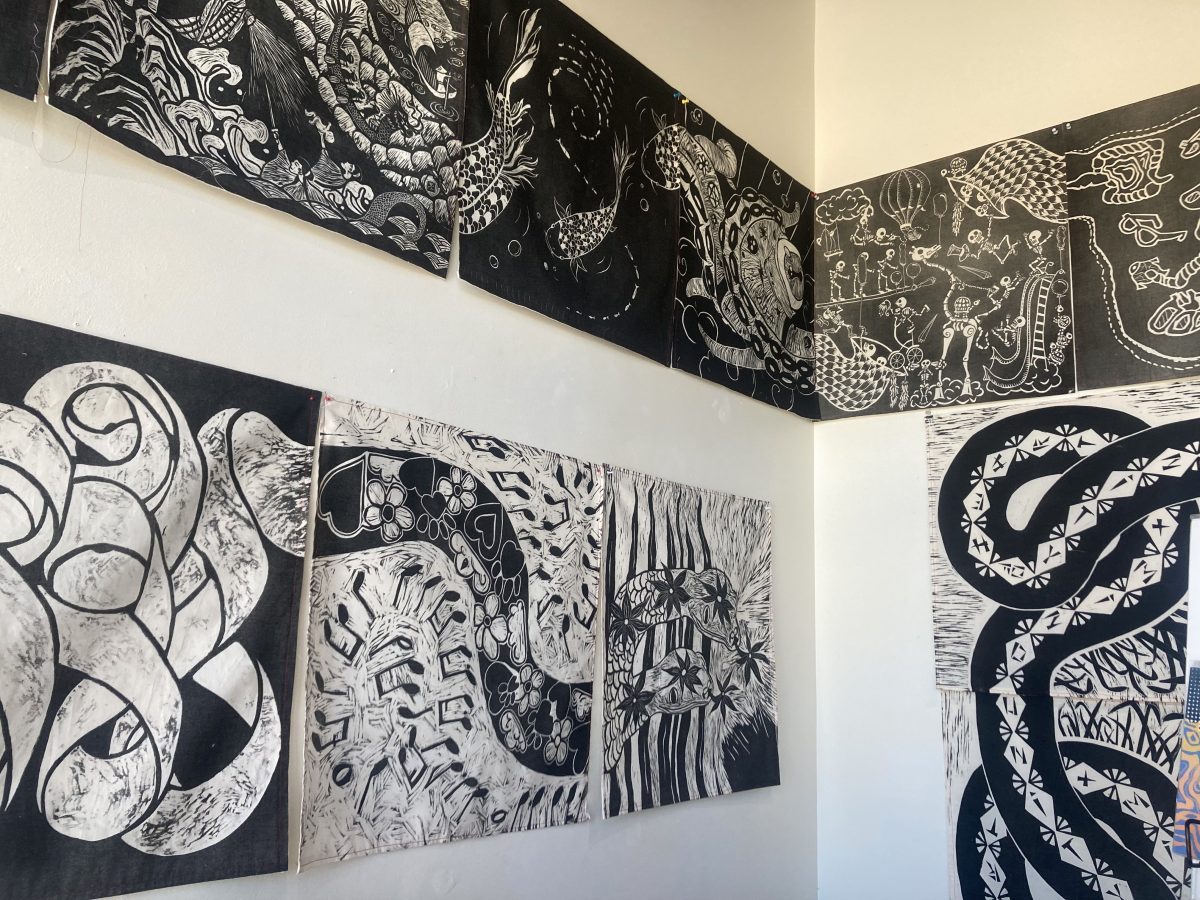

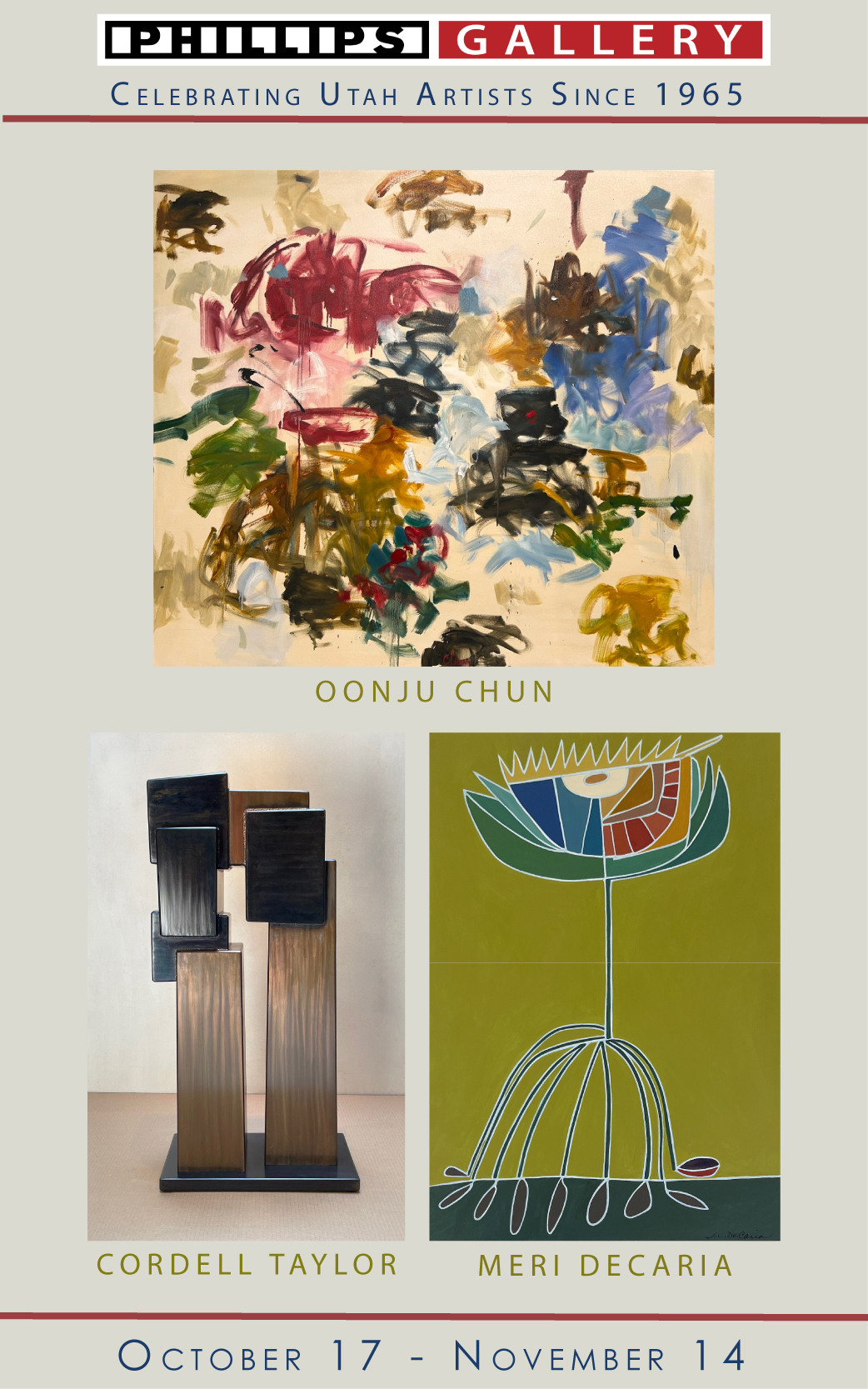






Something that I’ve carried in the back of my mind for a quarter century clicked when I read this. Stefanie has made some very large prints (for example) in her time, such as her Cathedral that covered a whole wall in the Gallery, not to mention the boxes she made from the templates after she cut them up. In a way, she divides every large work, perhaps to better share it. And in another way, this Snake charm is a culmination of that direction, since it was made in parts that she will assemble from time to time, not exactly reversing her usual approach, but giving it a new emphasis. Thank you, Shawn: I know you have an abiding connection to each other as colleagues and associates at Artists of Utah, a connection from which we all benefit.